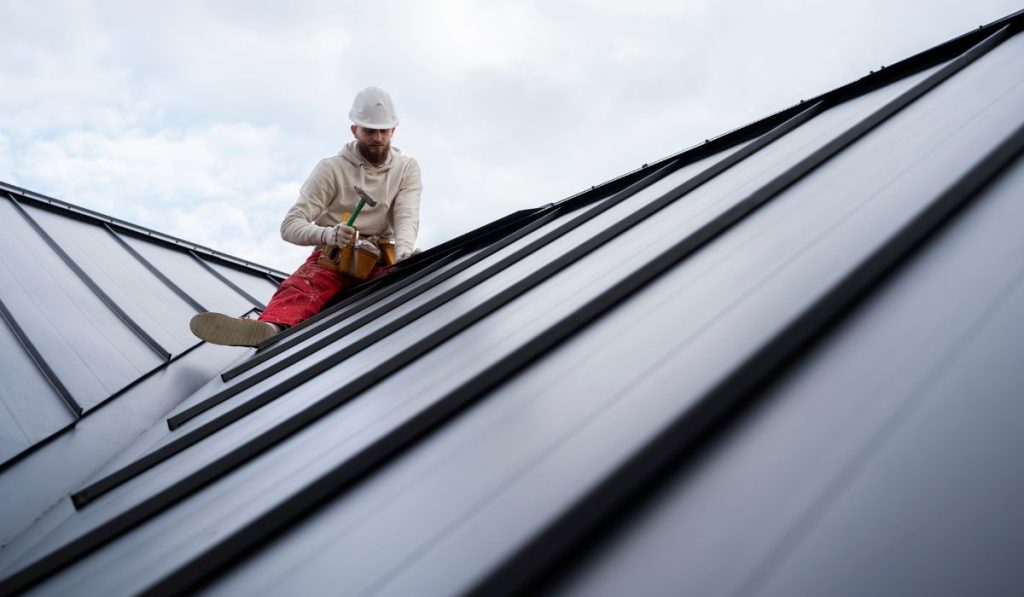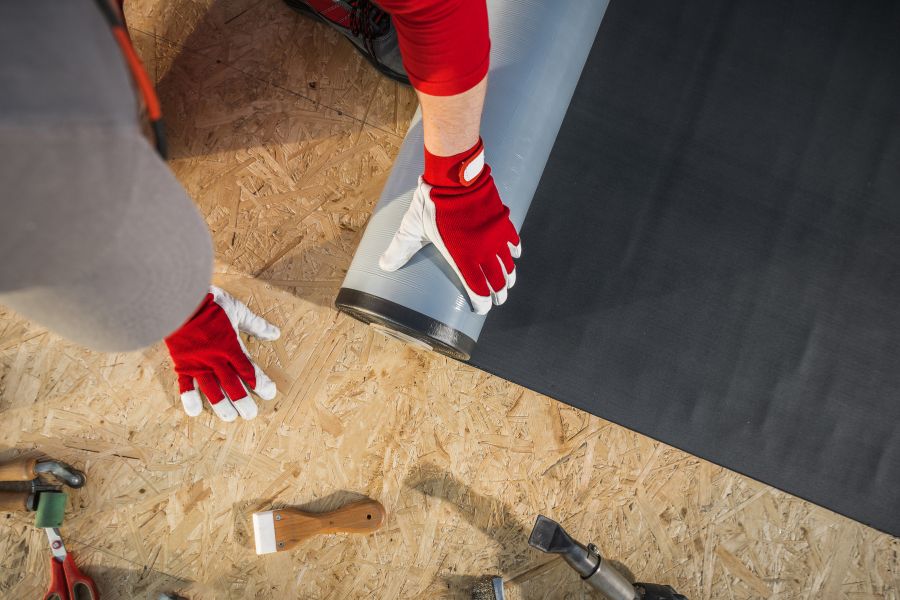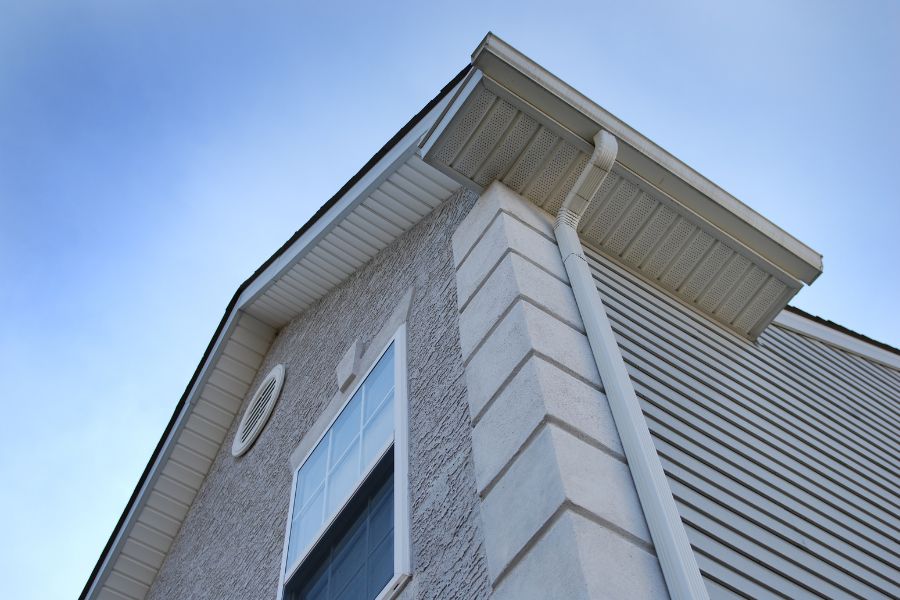TPO roofing is that bright white, rubbery material you see on a lot of flat roofs. It’s tough, reflects sunlight, and keeps energy bills in check. Still, plenty of homeowners wonder if they can give it a new colour.
Some want a darker look, others just want to refresh old, faded spots. Painting seems like a quick fix, but it’s not always that simple.
This guide breaks down whether painting TPO is a smart move or a money pit. You’ll get the pros, cons, and the practical tips you actually need before grabbing a paint roller.
What’s the best way to change the colour of a TPO roof?
The best way is using acrylic or silicone roof coatings with proper primer, not regular paint, for results that last 3–5 years.
Key Takeaway
- Yes, TPO roofs can be painted, but it’s tricky.
- Only use coatings made for TPO (acrylic, silicone, elastomeric).
- Prep and primer are non-negotiable for adhesion.
- Expect short-term results (3–5 years), not a permanent solution.
- Coatings are often smarter than paint for durability.
What Is TPO Roofing?
TPO stands for thermoplastic olefin, a single-ply roofing membrane made from rubber and fillers. It’s designed to be lightweight, flexible, and highly resistant to UV rays and heat.
You’ll mostly spot TPO on flat or low-slope commercial roofs, but homeowners are starting to catch on too. With proper care, it usually lasts 15–20 years before showing signs of wear.
Unlike shingles or metal, TPO has a smooth, heat-weldable surface. That makes it tough against leaks but also trickier if you’re thinking about painting it. The finish isn’t as absorbent, so standard paint won’t grip the same way.
Can TPO Roofs Be Painted?
Yes, you can paint TPO roofing, but it’s not as straightforward as slapping on a coat of paint. The material’s slick surface, flexible nature, and chemical makeup make it hard for paint to grip long-term.
That said, painting can sometimes be worth the hassle. If your roof is fading, reflecting too much heat, or you just want a fresh look, it can work with the right prep and products.
The catch? Not all paints will stick, and even the ones that do may need touch-ups sooner than you’d like. If your roof is still in solid shape and energy-efficient, paint may be more headache than help. But if you’re set on changing the vibe, think of it as a short-term facelift, not a forever fix.
Benefits of Painting TPO Roofing
Aesthetic Boost: Plain white TPO looks functional but not exactly stylish. A fresh coat of paint lets you match your roof with your home’s vibe. It’s a quick flex that makes your property feel more polished.
Better Energy Efficiency: Paints with reflective or cool-roof coatings bounce back sunlight instead of soaking it up. That means a cooler interior, less AC use, and smaller energy bills.
Longer Roof Life: Quality coatings act like sunscreen for your TPO. They protect against UV damage, slow down wear, and help your roof last longer. A little paint now can save you from big repair bills later.
Challenges and Risks
Painting TPO isn’t a quick weekend flex. The surface is slick, so most paints won’t stick without special prep. Skip that step and you’ll watch your fresh coat peel off in months.
UV rays are another headache. TPO already resists sunlight, but paint can crack and fade faster than you’d like. That means more touch-ups and more cash down the line.
There’s also the warranty risk. Some manufacturers void coverage if you slap paint on top. Before you break out the roller, double-check your paperwork. The move can work, but only if you know the risks and play it smart.
What Paints and Coatings Work Best on TPO?
TPO doesn’t play nice with just any paint, so you’ve got to pick coatings made for slick, flexible surfaces. Acrylic latex and silicone-based coatings are usually the go-to. They stick well, flex with the roof, and handle heat without cracking.
Reflective “cool roof” coatings are another cheat code. They bounce sunlight, keep your space cooler, and even extend the life of the roof. If you’re after longevity, silicone’s your best bet because it resists ponding water like a champ.
Skip regular house paint. It won’t bond right, and you’ll end up with flakes faster than a cheap tattoo. Always clean the roof first, hit it with a primer if needed, and roll on a product that specifically says “TPO approved.” That’s how you get results that actually last.
Step-by-Step Guide to Painting TPO Roofing
Preparation: Start with a deep clean. Remove dirt, grease, or old coatings with a pressure washer or roof-safe cleaner. Let the surface dry fully, since trapped moisture ruins paint adhesion. For extra grip, lightly scuff the surface with a scrub pad.
Priming: TPO is slick, so a bonding primer is your cheat code. It helps the paint actually stick instead of peeling off in sheets. Always choose a primer made specifically for TPO or single-ply membranes.
Application: Use a sprayer for smooth coverage, or a roller if you’re keeping it simple. Two thin coats beat one thick mess. Let each coat dry per the product instructions, usually a few hours in good weather.
Aftercare: Inspect the roof every season. Touch up scratches before they spread, and clean off debris to keep the finish fresh. A little upkeep keeps the paint flexing and your roof looking sharp.
Alternatives to Painting TPO
If painting feels like forcing a square peg into a round hole, you’ve got other moves. Roof coatings like silicone or acrylic can refresh your TPO and add UV protection without the hassle of paint.
Another option? Go for a roof overlay. Laying new TPO over the old gives you a cleaner look and extended life. If the roof’s truly beat, a full replacement is the long-term flex that saves you from patch jobs down the road.
FAQs on Painting TPO Roofing
1. Is painting TPO roofing recommended?
Not usually, but coatings can work if applied correctly with proper prep.
2. What type of paint sticks to TPO?
Elastomeric roof coatings with primer work better than standard paints.
3. Will painting TPO affect its warranty?
Yes, most manufacturers void warranties once the membrane is painted.
4. How long does painted TPO last?
Depends on prep, but usually 3–5 years before touch-ups are needed.
5. Are coatings better than paint for TPO?
Yes, coatings are designed to bond, resist UV, and extend lifespan.
Conclusion
Painting TPO roofing isn’t impossible, but it’s not a quick weekend flex either. If you prep it right and pick the right coating, you’ll stretch its life and give it a fresh look.
Skip the shortcuts, stick to quality products, and you’ll turn a basic roof into something that holds up and looks sharp.





